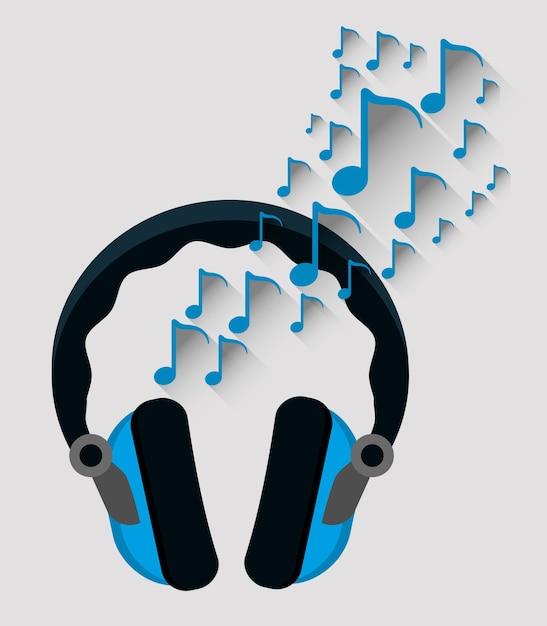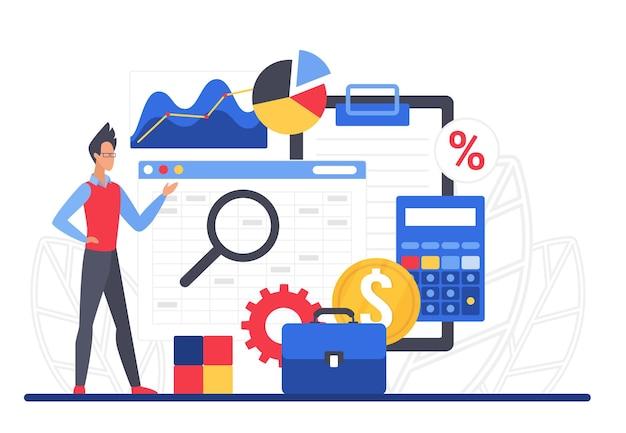Programmatic radio has been creating a buzz in the advertising industry and raising questions about the future of radio advertising. But what is programmatic radio, and how does it work? In simple terms, programmatic radio is a technology that automates the buying and selling of radio ads. It uses artificial intelligence (AI) and data analysis to target audiences and deliver ads. Programmatic radio is an efficient and effective way to reach your audience with the right message at the right time on the right channel. Are you interested in learning more about programmatic radio? Keep reading to find out the best programmatic radio software, what programmatic music is, and how programmatic audio advertising works.
What is Programmatic Radio
You might be wondering what programmatic radio means. To understand programmatic radio, it is essential first to understand programmatic advertising. Programmatic advertising is an automated method of buying and selling ad inventory using AI algorithms. Programmatic radio is a sub-category of programmatic advertising, where the ads are broadcasted on radio stations. It means that programmatic technology automates the buying and selling of radio ads, targeting specific audiences using data and AI analysis.
What is Programmatic Music
Programmatic music is another aspect of programmatic advertising. It involves the algorithms choosing the music played on radio stations. Programmatic music uses data-driven algorithms that analyze listener behavior and demographics. The algorithms use this data to select the appropriate music for on-air broadcasts.
Best Programmatic Radio
Programmatic radio software has revolutionized how radio ads are bought, sold, and delivered. Deciding on the best programmatic radio software is crucial for advertisers. The top programmatic radio software includes Jelli, Marketron, and WideOrbit. Advertisers should choose the programmatic radio platform that best suits their needs and budget.
Programmatic Radio software
Programmatic radio software enables advertisers to target audiences with relevant messages on the right channels using AI algorithms. There are several programmatic software solutions available, including wide orbit, Marketron, and Jelli.
Programmatic Audio Advertising
Programmatic audio advertising uses the latest technology to deliver ads efficiently and effectively to the right audience. It uses data and automated algorithms to match the right ad with the right audience using different targeting factors. Targeting factors include age, gender, location, listening habits, and purchasing behavior.
How does Programmatic Audio Work
Programmatic audio uses data and AI algorithms to deliver ads to the right audience at the right time on the right channel. Advertisers use programmatic audio to reach potential customers via podcasts, streaming services like Spotify and Pandora, and other digital audio channels. Leveraging the power of data and analytics helps advertisers target their audience with laser precision.
In conclusion, programmatic radio is a powerful tool for streamlining how advertising works on radio stations. Advertisers can use programmatic radio to target audiences, deliver ads efficiently, and make data-driven decisions. This technology is rapidly expanding, giving advertisers a new tool to reach their target audiences with greater precision.
Programmatic Radio: Revolutionizing the Radio Industry
Programmatic advertising has become more prevalent in the advertising industry, offering digital marketers an efficient and cost-effective approach to reaching their desired audience. But have you ever thought about programmatic advertising in the radio industry? Well, you should! Programmatic radio is disrupting traditional radio advertising in a significant way and is bringing new technology and efficiency to the industry. In this article, we will explore what programmatic radio is, how it’s changing the radio advertising industry, and its benefits for advertisers.
What is programmatic radio
Firstly, let’s define what programmatic radio advertising is. Programmatic radio advertising is an automated process of buying and selling radio ad inventory using software platforms. The process includes the use of data and algorithms to automate and optimize the buying and selling process of radio ads. Instead of the traditional way of purchasing radio ads where advertisers have to deal with sales representatives, programmatic radio advertising uses an exchange to match ad inventory to the advertiser’s audience.
How is programmatic radio changing the radio advertising industry
Programmatic radio advertising is changing the radio advertising industry by offering digital-like targeting, automation, and real-time reporting to radio advertisers. This automation allows radio advertising to be more efficient, as it takes away the need for human involvement in the buying and selling process, making it quicker and more accurate. Programmatic radio advertising is also revolutionizing the way radio advertising is bought and sold. It gives advertisers the ability to target specific audiences and demographics. This level of targeting means that advertisers can reach specific listeners with tailored messages, increasing the relevance of their ads and ultimately improving their effectiveness.
The benefits of programmatic radio for advertisers
For advertisers, programmatic radio offers cost efficiency, increased targeting capabilities, and real-time reporting. The buying process is automated, allowing advertisers to save time and money while also providing more accurate and relevant ad targeting. Programmatic radio technology allows advertisers to access granular audience data, ensuring that their ads are reaching the intended audience, leading to higher ROI. Finally, programmatic radio advertising offers advertisers real-time reporting and performance metrics, giving them the ability to make optimized, data-driven decisions on their advertising campaigns.
Conclusion:
Programmatic radio is bringing new technology and more significant efficiency to the radio advertising industry. It’s changing the way radio advertising is bought and sold and offers advertisers more cost-effective, targeted, and data-driven campaigns. As the radio industry continues to adapt to the programmatic revolution, advertisers that adopt programmatic radio will enjoy higher efficiency, accurate targeting, and improved ROI.
Best Programmatic Radio
Programmatic radio advertising is growing in popularity for several reasons: it is cost-effective, reaches a large audience, and makes it easier to target specific demographics. Choosing the best programmatic radio platform for your business can be a daunting task, but with the right information, it can be an easy decision. In this section, we will discuss the best programmatic radio platforms on the market today.
iHeartMedia
iHeartMedia is one of the most comprehensive programmatic radio platforms available today. It provides a broad range of options for businesses of any size to reach their target audience. With iHeartMedia, you can target consumers based on geography, demographics, and behavior. You can also access iHeartMedia’s data to optimize your targeting. One of the best things about iHeartMedia is that it provides a large library of audio content, making it easy to select the content that best fits your brand.
Triton Digital
Triton Digital is another excellent programmatic radio platform that offers many advanced targeting features. With Triton Digital, you can easily target your audience based on their behavior, geography, and demographics. It also provides real-time monitoring and reporting so you can quickly adjust your campaign based on performance.
Adwave
Adwave is an excellent programmatic radio platform for small and mid-sized businesses. Its dashboard is easy to use, making it easy for businesses to create, launch, and manage their campaigns. Adwave’s targeting capabilities allow you to target customers by age, gender, location, and even specific radio stations.
Megaphone
Megaphone is another excellent programmatic radio platform that provides significant targeting options, as well as comprehensive reporting and analytics. With Megaphone, businesses can reach a large and diverse audience, while benefiting from some of the most advanced targeting capabilities available.
Choosing the best programmatic radio platform for your business will depend on several factors, including the size of your business, your target audience, and your budget. The most critical thing to consider is the platform’s targeting capabilities and whether they align with your goals. With the right programmatic radio platform, you can create unique campaigns, reach a vast audience, and maximize your advertising investment.
What is Programmatic Music
Programmatic music is a relatively new term in the world of music. The term “programmatic” refers to music that is composed for a specific purpose or to evoke a particular mood or emotion in the listener. The term has been used to describe everything from classical music to computer-generated soundscapes.
How Does Programmatic Music Work
Programmatic music typically works by incorporating elements of sound design, composition, and production into a cohesive whole. This can involve using specific instruments or sound effects to create a particular mood or atmosphere. For example, a composer might use a slow, mournful melody to evoke a sense of sadness or loss in the listener.
Examples of Programmatic Music
One of the earliest examples of programmatic music is Vivaldi’s “The Four Seasons,” which uses different musical themes and sound effects to represent each season of the year. Another well-known example is Beethoven’s “Eroica Symphony,” which tells the story of a hero’s journey through its musical themes and motifs.
More recently, programmatic music has taken on a new meaning with the advent of electronic music and digital audio production. Electronic artists like Aphex Twin and Autechre have used programmatic techniques to create complex, layered soundscapes that are designed to evoke specific emotions or moods.
Programmatic Music and Radio
Programmatic music has also found its way into the world of radio. With the advent of programmatic radio, broadcasters can use data and algorithms to tailor their music playlists to the tastes of their listeners. This means that listeners can enjoy a more personalized listening experience without sacrificing the variety and spontaneity of traditional radio.
In conclusion, programmatic music is a fascinating area that is still evolving and changing. Whether you are a composer, producer, or just a curious listener, there is much to explore and discover in this exciting field.
What is Programmatic Radio
If you’re wondering what programmatic radio is, you’re not alone. It’s a hot topic in the advertising industry right now, and there’s a lot to unpack.
At its core, programmatic radio is a way of automating the buying and selling of radio advertising. With programmatic radio, advertisers can reach a larger audience with more targeted ads, while radio stations can increase their revenue by selling their ad space more efficiently.
How Programmatic Radio Works
Programmatic radio works by using software to buy and sell radio ads in real-time. Here’s a breakdown of the process:
- Advertisers create ads and load them into the system.
- The system analyzes the ads and determines which audience segments they’re best suited for.
- When a radio station’s ad inventory matches a segment, the system automatically serves up the appropriate ad.
This whole process happens in real-time, allowing advertisers to reach their target audience more efficiently than ever before.
Benefits of Programmatic Radio
Programmatic radio offers a number of benefits for both advertisers and radio stations. For advertisers, it allows them to reach a larger audience with ads that are more targeted and relevant. For radio stations, it allows them to increase their revenue by selling their ad space more efficiently.
In addition, programmatic radio allows for more detailed reporting and analytics than traditional radio advertising. Advertisers can see exactly who their ads are reaching and how those ads are performing, allowing them to make data-driven decisions about their advertising strategy.
Programmatic radio is revolutionizing the world of radio advertising, offering benefits for both advertisers and radio stations. By automating the buying and selling of radio ads, programmatic radio allows advertisers to reach a larger audience with more targeted ads, while radio stations can increase their revenue by selling their ad space more efficiently. If you’re not already using programmatic radio in your advertising strategy, now is the time to start.
Programmatic Radio Software: A Game-Changer for the Radio Advertising Industry
The traditional radio advertising industry has been transformed in recent years by programmatic radio advertising, thanks to the evolution of programmatic technology. Programmatic radio advertising has been a game-changer because it offers advertisers the chance to purchase programmatic radio advertisements with the help of programmatic radio software.
What is Programmatic Radio Software
Programmatic radio software is software that utilizes algorithms to buy radio ads automatically. This programmatic technology works by using data, such as demographics or listening behaviors, to target specific audiences.
Benefits of Programmatic Radio Software
Programmatic radio software has several benefits over traditional ways of buying ad-space that make it an attractive option including:
-
- Cost-effectiveness: Programmatic radio software uses an auction-based system, which means it allows advertisers to pay only for the ad-space they purchase, and the price they pay is determined by market demand, not fixed costs.
- Efficiency: Programmatic radio advertising allows advertisers to manage their campaigns in real-time, which means they can make changes on the fly to optimize their campaigns, such as adjusting the target audience, messaging or modifying ad creatives.
- Increased targeting accuracy: Programmatic radio software uses various data touchpoints, including listening behaviors demographics, and geographic data to help advertisers target their ideal audience.
How to Align Programmatic Radio Software with your Marketing Strategy
To take advantage of programmatic radio software, advertisers must align their programmatic campaigns with their overall marketing strategy. This includes knowing their target audience and what message they want to convey to achieve their desired results.
In conclusion, programmatic radio software is a significant advancement in radio advertising technology that has proven to increase the efficiency, accuracy and cost-effectiveness of radio advertising campaigns. By using programmatic radio software, advertisers can create ad campaigns that align with their overall marketing strategy and reach the right audience with the right message.
Programmatic Audio Advertising
As we’ve already mentioned, programmatic radio is a new and effective way of advertising that uses streaming technology to target specific audiences. One of the most popular subsets of programmatic radio is programmatic audio advertising, which is increasingly being used by businesses and brands across different industries to reach a larger and more engaged audience.
What is Programmatic Audio Advertising
Programmatic audio advertising is a type of audio advertising that uses software to automate the buying and selling of ad inventory. With programmatic audio advertising, businesses and advertisers can leverage data-driven insights to create more personalized and relevant ads, which can lead to higher engagement rates and better ROI.
How does Programmatic Audio Advertising Work
Programmatic audio advertising works by buying and selling ad inventory in real-time. Advertisers can use programmatic platforms to target their ads based on specific demographics, behavior, and interests, among other data sets. Then, the platform automatically places the ad on a relevant audio channel where users can listen to it.
Benefits of Programmatic Audio Advertising
Programmatic audio advertising comes with several benefits for both advertisers and listeners. Firstly, it allows businesses to reach a more targeted and engaged audience, which results in higher conversion rates. Additionally, it allows for better measurement and optimization of campaigns, leading to more effective and efficient spending of advertising budgets.
Challenges of Programmatic Audio Advertising
Despite its effectiveness, programmatic audio advertising is not without its challenges. For example, it can be difficult to track purchases and conversions based on audio advertising alone. Moreover, it requires high-quality creative content that engages the listener and accurately conveys the business’s message.
Programmatic audio advertising is an innovative advertising method that has gained much attention in recent times. Advertisers are increasingly using software to automate the buying and placement of ad inventory, resulting in more effective campaigns and better advertising ROI. When used correctly, programmatic audio advertising can help businesses and brands reach a more targeted and engaged audience, leading to a much higher chance of converting those listeners into customers.
How Does Programmatic Audio Work
Programmatic audio is a modern method of buying and selling audio advertising inventory using software and algorithms. The process involves a few steps that ensure the right message reaches the right audience seamlessly. Here’s a step-by-step explanation of how programmatic audio works
The Advertiser and Publisher Join a Demand-Side Platform (DSP) or Supply-Side Platform (SSP)
An advertiser looking to promote their brand or product joins a DSP that has an inventory of audio ads. The DSP allows the advertiser to target their ads based on factors such as location, age, gender, interests, and more. On the other hand, the publisher joins an SSP that accommodates their inventory of audio content.
The Advertiser Buys Ad Slots Through the DSP
The advertiser uses the DSP to buy ad inventory from the publisher that aligns with their target audience criteria. The DSP places bids on the inventory available through the SSP in real-time.
The Ads Get Delivered to the Right Audience
The ads are then delivered to the targeted audience through several devices, such as smartphones, laptops, desktops, smart speakers, and more. Programmatic audio ads are served either through streaming platforms or internet radio stations.
The Advertiser Gets Reports and Analytics
Finally, the advertiser gets data reports on the performance of their ads in real-time. They can see metrics such as impressions, clicks, views, conversion rates, and more. This data allows them to optimize their ads for better performance.
In conclusion, programmatic audio is a modern and efficient way of buying and selling audio ad inventory online. It’s a game-changer in the audio advertising industry by providing better targeting, automation, and transparency. With programmatic audio, advertisers can reach their target audience more effectively and publishers can monetize their audio content better.



